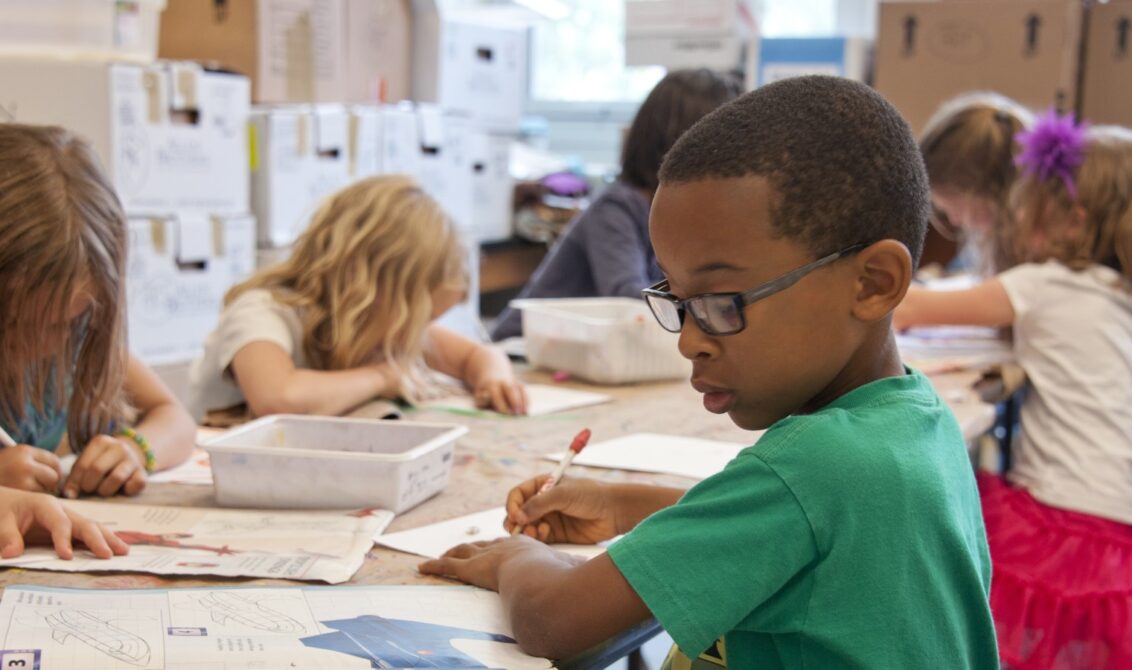
Mastery of learning is something that humans do instinctively, right from birth. Think about how babies learn to walk over the course of months and months. They begin with sitting, finding their balance, pushing themselves up again and again in pursuit of their goal. Next comes standing – and a fair amount of toppling over or sitting down with a bump! Then, they progress to cruising, moving around using walls or furniture to keep their balance, before finally mastering the skill of walking.
In recent years, a growing number of schools have begun to adopt mastery of learning as a strategy for the classroom.
How do you explain mastery of learning in plain terms?
When learning a new subject, all students must have mastered key concepts before moving on to the next topic. Although the learning objectives are constant, the depth of mastery can vary from student to student, and depends on their own pace.
Maths lead Ellie Kelly uses the analogy of a train to explain mastery of learning:
All the children get on a train and follow the train journey and go to every station. How far they venture from that station is how deeply they are able to explore that subject. The main thing is – they all start from the same entry point, and no child is left behind.
Effectiveness of mastery learning
Mastery of learning offers various benefits to students of different ages. Here are just a few:
- Research has shown positive learning outcomes from students, including students at risk of failure.
- Mastery learning has been proven to help with mixed ability classes, narrowing the gap between disadvantaged and advantaged children.
- It helps combat some of the problems that come with more traditional differentiation methods – instead of putting children into pockets and categorising them in sets, all students are given the same opportunities to learn the same content, and offered additional support where needed.
- It has been used across the curriculum, but has been proven particularly successful for reading, mathematics and science.
- It encourages lifelong learning – students understand the value of perseverance, and better understand their learning goals.
- Many teachers report feeling more empowered, as they are given the flexibility to adapt their teaching and slow down the pace.
Techniques for implementing mastery in schools
So, we can see that mastery learning has clear benefits. But embedding mastery into a school curriculum takes time. To help you on your journey, here are some techniques for success:
1. Set demonstrable learning goals
Before embarking on mastery learning, try asking the following questions: What do we want students to know and be able to do? What does success look like? How will they demonstrate their mastery? How will we measure it?
For example, in a Spanish class, students learning the present tense must be able to write ten sentences about their daily routine correctly. That way, you’ll be sure they’ve mastered the present tense before moving on to more complex grammar.
2. Create effective groups for collaborative work
Mastery learning has been found to be particularly effective when students work collaboratively. This is because students take responsibility for each other’s progress, and help each other move forward.
However, it’s not enough to allow groups of friends to work together. As the teacher it’s important to engineer the groups, as research shows that effective collaborative groups have some key characteristics:
- A diversity of learning styles and expertise in the group
- A sense of a collective team-based learning effort
- An emphasis on different learning styles and ways of sharing knowledge
- A view of one another as researchers and resources for learning
3. Provide an anchor task
An anchor task is a problem given to students at the beginning of a lesson. It gives them the opportunity to draw upon prior knowledge, and requires them to ask questions of each other, working together to look for solutions.
For example, in a primary maths class an anchor task might involve one student simply counting some building blocks one by one. Another stronger student on the other hand, may feel more confident in challenging themselves to try multiplication or repeated addition.
4. Monitor progress carefully
To be able to advance in a topic, a clear boundary needs to be established. Typically this happens when 80-90% of knowledge has occurred. This is normally measured with an end of topic assessment such as a written exam, presentation or verbal test.
In a primary maths class, children would normally have to demonstrate they can solve problems accurately and fluently. So the mastery benchmark may be that they can solve 9 multiplication problems out of ten within 4 minutes.
It’s also important to provide clear and consistent feedback to students – highlighting what they’ve done well and areas they need to improve on to demonstrate mastery of learning.
5. Provide additional support for struggling students
In mastery learning there is a shift in responsibility – when a student fails to grasp a concept, it’s not seen as a reflection of their learning ability. Instead, it’s a cue for the teacher to look at their method of instruction, and see if there’s a more effective way to deliver the knowledge that they are trying to impart.
Teachers can vary the way content is presented, such as trying alternative textbooks, using audiovisual methods, or simplifying instruction. Additional tuition or peer support can also be useful tools to help students achieve mastery and progress to the next level of learning.
Further reading
Want to learn more about mastery? Mastery of teaching is a related approach. It differs from traditional teaching methods, which place a higher emphasis on aptitude, standardized grades and an approximate time teachers ‘should’ spend on a unit. With mastery of teaching, it’s up to the teacher how long they spend on a topic, and the depth to which they delve into. Learn everything you need to know about mastery of teaching in maths classes.
Subscribe to our blog
If you want to stay up to date, subscribe to our blog. You’ll get a fortnightly roundup of the articles you’ve missed straight to your inbox, plus links to free teaching resources.

